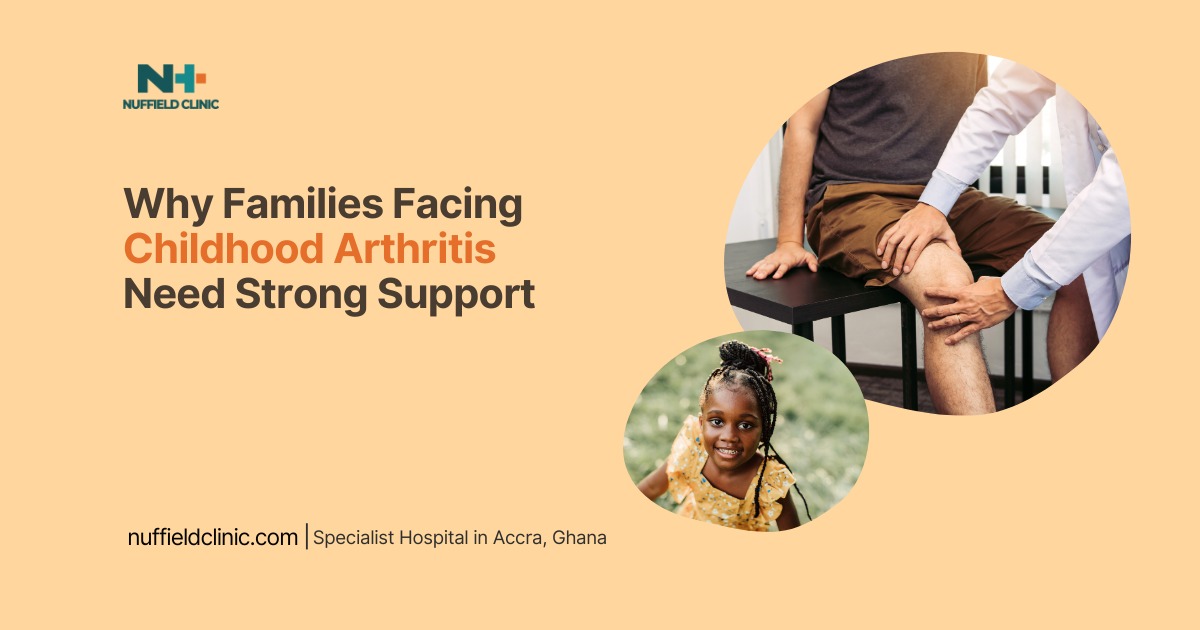Why Families Facing Childhood Arthritis Need Strong Support

When a child is diagnosed with juvenile idiopathic arthritis (JIA), the impact often stretches far beyond the joints. While the name suggests a condition confined to physical discomfort, JIA can affect growth, disrupt daily routines, and alter the emotional dynamics of the entire household. For families, navigating this reality means managing more than symptoms; it involves adapting to uncertainty, coordinating care, and finding ways to preserve a sense of normalcy in the midst of a chronic illness.
Childhood Arthritis
JIA is an autoimmune condition that causes chronic inflammation in the joints of children under 16. Unlike the more commonly known adult forms of arthritis, JIA can influence not only movement but also a child’s overall development. In some cases, it affects internal organs, including the heart, lungs, eyes, or skin. Symptoms can change quickly, even within the same day, making the condition unpredictable and difficult to manage without close observation and flexibility.
There are several subtypes of JIA, each with distinct characteristics. Some affect just a few joints, others are systemic and influence the whole body. Many children experience fatigue, fevers, loss of appetite, or rashes alongside their joint symptoms. In very young children, pain may show up not as a complaint, but as behaviours like avoiding movement, sitting more often, or becoming unusually fussy. Older children may try to hide their discomfort, fearing they’ll stand out among their peers.
Because the signs of JIA can mimic common childhood complaints, like growing pains or the soreness that follows a fall, families and caregivers may not immediately recognise them as part of a larger issue. This can delay diagnosis and treatment, which increases the risk of lasting joint damage or complications like vision loss. Early identification, therefore, is essential, but it relies heavily on adults who know the child well and can notice subtle, persistent changes.
The Weight Families Carry
Raising a child with JIA often requires more than frequent medical visits. It can involve late nights, changes in work schedules, financial strain from medications or therapies, and emotional fatigue from watching a child struggle. The burden is not only physical, but deeply emotional, especially when symptoms interfere with school, friendships, or once-loved activities.
Children may miss school for appointments or during flare-ups, leading to academic setbacks and social isolation. Morning stiffness can make it hard to get to school on time. Writing assignments may become painful, or participation in physical education might be limited. These barriers can affect a child’s confidence and contribute to feelings of being different, especially when others can’t see or understand the pain.
For parents, balancing empathy and encouragement becomes a daily challenge. It is natural to want to protect a child from discomfort, yet promoting independence and resilience is just as important. Children who are encouraged to express how they feel, participate in decision-making about their care, and continue engaging in school and activities, even with accommodations, often develop stronger coping skills.
Holistic Care
Successful management of childhood arthritis goes beyond medical treatment. While medications such as anti-inflammatories, immune modulators, or biologics play a central role, physical and occupational therapy are essential for helping children stay active and maintain independence in daily tasks.
Families also benefit from a team approach. Pediatric rheumatologists, general practitioners, physical therapists, school staff, and mental health professionals all contribute to a child’s well-being. Regular communication among these providers helps ensure that treatment aligns with a child’s evolving needs.
Beyond the clinic, support systems matter deeply. Families who connect with others facing similar challenges often report feeling less alone and better equipped to manage their situation. Camps, peer support groups, and parent networks offer a space to share stories, exchange practical advice, and simply feel understood.
Emotional Health
The emotional toll of JIA on children is often underestimated. Worries about missing out, being teased, or falling behind can lead to sadness, anxiety, and a sense of loss. Children may feel frustrated by the limitations their bodies place on them, or scared by the idea of injections or long-term medication. Some struggle with sleep, appetite, or mood swings. These are not just side effects of the illness; they are critical aspects of a child’s experience that deserve attention.
Parents, too, may feel overwhelmed. It is common to grieve the loss of expectations, fear what lies ahead, or feel guilt about not always having the answers. It is important to recognise these feelings. Parents who prioritise their own well-being, seek support when needed, and practice self-compassion often model valuable resilience for their children.
Mental health professionals can offer strategies to help families manage stress and support children through emotional challenges. Simple practices, like distraction during procedures, using reward systems, or allowing children to make small choices about their care, can make a tangible difference in how a child experiences their illness.
Role of Schools and Communities
Educational settings are key environments where the impact of JIA becomes visible. Teachers who understand the condition can make small but meaningful adjustments: extra time for assignments, flexible seating, breaks for movement, or using technology to reduce the physical demands of writing. These accommodations help level the playing field and reduce the risk of academic decline or social withdrawal.
Parents and educators benefit from open communication. Meeting before the school year starts, updating staff on treatment changes, and providing clear documentation of the child’s needs can create a collaborative atmosphere. Some children may qualify for formal support plans, such as 504 Plans or IEPs, which outline specific accommodations and ensure they are consistently implemented.
Building a Web of Support
No family should have to navigate childhood arthritis alone. National and international organisations offer guidance, education, and direct assistance. Financial support programs can help with medication costs, travel for treatment, or adaptive equipment. Scholarships and grants are available to students with chronic illnesses, recognising the unique barriers they face.
Support groups and online communities bring together parents, siblings, and children with JIA to share advice and encouragement. Specialised camps allow kids to connect with others who understand what it’s like to manage arthritis, helping them build friendships and confidence in a supportive environment.
A Path Forward
Raising a child with JIA is filled with complexity, but also resilience. Families who receive timely medical care, emotional support, educational accommodations, and community connection are better positioned to help their children thrive.
The goal is not just to manage symptoms but to support the full experience of childhood school, friendships, creativity, and independence. This requires a flexible, multidisciplinary approach that evolves with the child and embraces the whole family.
If you are concerned about childhood arthritis or want to explore tailored support options, book a consultation with a specialist at Nuffield Clinic today.







